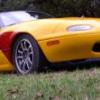Do I see corroded bolts going back in on the oil pump. You slipping on us Jason.
See Ralph, I fixed it just for you and I didn't even have to get any tools out! Nice shiny bolts. Weird, this V2 decal showed up out of nowhere too. hmm. ![]()



Do I see corroded bolts going back in on the oil pump. You slipping on us Jason.
See Ralph, I fixed it just for you and I didn't even have to get any tools out! Nice shiny bolts. Weird, this V2 decal showed up out of nowhere too. hmm. ![]()






Ha! You're just seeing things Ralph! I would never. But if there were corroded bolts, then maybe I'll have to get the dremel out and polish them up. Just for you
You could use red finger nail polish. Did I tell you I caught Ralph in the bathroom,,.. Oh never mind.
Frank
TnT Racing
SCCA Ohio Valley Region





Haven't updated the thread in a bit, but that doesn't mean I haven't been working on the car! I'll be back-posting progress for the next couple days.
I was planning to spend a lot of time adding stiffening braces (triangles) to my drivers side door bars. Before I did, I asked Erik Hardy to do some FEA analysis for me, as he does this sort of thing for work.
This isn't a 'full out' cage FEA analysis here. It's just a quick-and-dirty study of door bar performance for vertical stiffness. Certainly the boundary conditions aren't perfect, as the model consists solely of the door bars, front hoop, and one leg of the main hoop. Having other bars in the system would affect simulation results. That said, it's perfectly good information to use for making my decision of whether or not to add additional structure to the door bars.
4 designs were considered. The goal was to measure the vertical stiffness of each design. Loading was accomplished by grounding the front bottom of the front hoop, and applying a 1" vertical displacement to the rear bottom of the main hoop. Resulting stiffness was reported as a spring rate, in lbf/inch.
Yes, you can make a stiffer door bar setup by adding more tubes. But the takeaway here is that there is no need. 2688 lbf/in is very stiff already!! That's a full order of magnitude higher stiffness than, for example, the rear corner wheel rate. So, making the cage significantly stiffer would provide minimal/negligible benefit in chassis stiffness, relative to the suspension stiffness. It's just not worth the time, complexity, mass, and money to add more structure to my door bars. Thanks Erik!
Results:










Survey: Where do you install your electrical kill switch, and why?
A: On main hoop near passenger side door
B: On trans tunnel or in dash panel
C: Alternate locations?
I know Ralph and maybe others have been using solid state kill switches that mount back near the battery, with a simple activation switch up in the dash panel. This would be the ideal solution. However, I've already got a basic mechanical kill switch, as well as battery cable, so going the traditional route.





You could re purpose a fire system pull cable and keep the switch on the main hoop. This would be the best of both worlds.
https://www.pegasusa....asp?RecID=2954
I have seen it done by grinding off the handle lettering and repainting.



Hmm, Trump small hands, and now soneone with short arms. ![]()
For my ![]() I like a traditional location for folks other than myself know immediately where to reach to shut off and where I can reach when fully belted in. Main hoop horizontal. moved closer for driver with shorter arms.
I like a traditional location for folks other than myself know immediately where to reach to shut off and where I can reach when fully belted in. Main hoop horizontal. moved closer for driver with shorter arms.




V2-Ralph has the slickest system---Not sure how many kills knobs you can mount with it but I haven't heard of any failures and the reach where ever the driver wants..






You could re purpose a fire system pull cable and keep the switch on the main hoop. This would be the best of both worlds.
https://www.pegasusa....asp?RecID=2954
I have seen it done by grinding off the handle lettering and repainting.
-tch
Build: www.tomhampton.info
video: vimeo.com/tomhampton
Support: X-Factor Racing
I didn't lose, I just got outspent!




I really like the Cartek solid state switch. I know it's really bling and expensive, but I like it for a few good reasons.
1. For the later cars that are very sensitive to operating voltage effecting the fuel pump/fuel pressure and as a result, air/fuel, this switch take out any chance of a internally corroded switch making a voltage drop( and yes, they do go bad often),.
2. for an NB, it makes the wiring very simple. The battery cable stays unmolested/unchanged save for cutting the ground wire in the trunk where it attaches to the body. This then goes to the cutoff(it controls the ground side). then the only wires to run are a 12GA 20amp power feed that I tie into the main relay feed, and 18ga wires run up to the cutoff push button. The alternator wires stay stock. When the switch is tripped, it kills the engine first by shutting off the 20amp feed(like turning off the ign switch) then milliseconds later, it cuts the ground side so the battery is totally isolated from the car and the power surge from the alt. spinning down is accommodated by the battery still being attached for the few milliseconds.
3.You can put as many external push buttons anywhere you want.
4. It has an automatic battery cut so that if senses inactivity for more than 2 hours it cuts the battery so power drain doesn't happen. Not a big deal with a Miata battery, but it is nice with a tiny racing battery.

Thanks all for the thoughts on kill switch mounting. Looks like I have quite a few options to consider.
Harness came in. I haven't used a harness yet that I've liked better than Schroth. They make it so effortless to loosen and tighten the belts, 2" lap belt, camlock works great, FIA so good for 5 years, not 2, and I like how they look in the car.

Picked up a radiator. This is just temporary. When I get time, I intend to build my own radiator using a core, as I think it would be a fun project, get to brush up on my aluminum welding, and I hate the idea of spending $600-$700 on the supposedly requisite springfield dyno radiator. That said, if by some miracle this radiator happens to keep the car cool in the draft, I'll proly just run it. Fat chance though. Still, look at this thing! Hard to believe it was only $101 shipped!!! ![]()

Cage is pretty much done now, just need brackets and tabs for window net, blower motor, helmet hook, and kill switch, etc. Don't have good photos of the whole cage yet, but here's a sneak peak of the rear down tubes. I took my time to get the holes in the package shelf as perfect as possible. It looks nicer, and I don't have to go back later and seal them up around the tubes.





Oh, and I forgot to post this. Shameless link to my classifieds ad for the Racetech seat that I need to sell. Somebody please buy it haha! ![]()
http://mazdaracers.c...seat-brand-new/





As to your comment on belt dates (post 673). All FIA and SFI belts are now good for 5 years, not just the FIA belts.

...
![]() I was kinda waiting to see how long I could go until someone noticed that I wasn't updating it. About a week!
I was kinda waiting to see how long I could go until someone noticed that I wasn't updating it. About a week!
As to your comment on belt dates (post 673). All FIA and SFI belts are now good for 5 years, not just the FIA belts.
That's with SCCA right? If I ever run NASA, I'll still need FIA for 5 years. Though I haven't checked the CCR, maybe they changed their rules too?
In other news, tested some thermostats yesterday. Yay, they actually do open at the correct temperatures that they are supposed to. Interesting design difference from oem (the one on the far right). The oem one opens on a larger diameter than the aftermarket, but only opened maybe ~3/16". The aftermarket are a smaller diameter, but opened substantially farther. Maybe even 3/8", but I didn't measure. Probably doesn't matter much, should be similar flow area for all three of them.





NASA has NOT changed the rule. SFI = 2 years, FIA = 5 years per the 2016 CCR. The guy in front of me at annual tech was dismissed for that very violation. I looked it up in the 2016 CCR for him to verify inspector was correct.
-tch
Build: www.tomhampton.info
video: vimeo.com/tomhampton
Support: X-Factor Racing
I didn't lose, I just got outspent!




Fab work is done! Today I spent time removing more parts instead of installing them - trunk lid, door handles, triangle windows, door seals, trunk seal, hardtop-to-body trim, etc. Some more seam sealer removal.
Good news is that it's now ready for painting! Err, ready for about a days+ worth of pre-paint prep. Clean the entire garage first, metal and other dust is everywhere currently. Wash interior. Scuff all the metal in the cage and interior. Vacuum out car. Mask everything. Solvent wipe everything. ...and then paint!
Will I be hating life later if I spray this thing without hanging plastic from the ceiling to make a temporary paint booth? Not so worried about debris in the paint, but about paint dust settling everywhere. Thoughts?
Cage pics. Brackets take time, fyi. blower motor mount bracket, battery disconnect mount, mirror mounts, helmet hook. Add provisions/reinforce for harness mounting points. Upper and lower window net mounts (Ralph you'll be happy, I'm hard mounting the lower window net bar this time, no more webbing strap). I also made a very custom aluminum upper window net bar. It's pretty trick. But, figured I'd save those pics for later when I install it.

About the lowest mass helmet hook that you ever did see:







|
Spec Miata →
Spec Miata (SM) →
13 year old driver wins NASA Florida season opener!!Started by Ernie Jr. , 01-10-2012 |
|

|
|
 
|
Spec Miata →
Spec Miata (SM) →
Poll
Which car will have the advantage in 2012 99, 1.6, 01, or 1.8Started by Ernie Jr. , 12-22-2011 |
|

|
|

|
Spec Miata →
Spec Miata (SM) →
NASA Toy Run Road AtlantaStarted by Ernie Jr. , 12-07-2011 |
|

|
0 members, 0 guests, 0 anonymous users